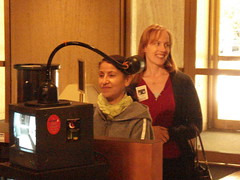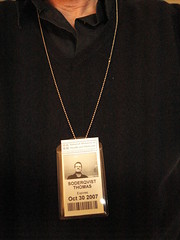Some medical (history) museums and exhibitions — like the Wellcome Collection in London — are easy to find and have a welcoming (!) attitude to visitors. Others are more of a challenge.
Last Tuesday I went to the (US) National Museum of Health and Medicine for a visit behind the public area. Curator Alan Hawk guided me around their rich collections, and personally I felt taken very well care of. But for the general public a visit to the NMHM is mildly off-putting.
Located in the northern part of Washington DC the museum is quite difficult to reach by means of public transport. It is placed on the Walter Reed Army Medical Center, there are no signs to help you find it, and visitors have to undergo two security checks: first at the campus gates and then again at the entrance to the museum where they take a photo and a copy of your ID.


And finally, after having made your way through the security thicket you are confronted with this behemoth:

Personally, I just love protein sequencers, but I can imagine how it might be somewhat disheartening for ordinary visitors without a training in protein chemistry to be confronted by this showcase before they are allowed to take a look at the beautiful instruments and anatomical specimens behind it.
To the museum’s excuse, it was probably put there because it was recently acquired. And for historians of contemporary biomedicine it is a most important and impressive artefact. Constructed by Caltech immunochemist William J. Dreyer while he worked as a consultant for Beckman-Spinco, it was patented in 1977 (see detailed description in Google Patents here), and then rapidly became one of pivotal instruments in the ‘biomedical revolution’ of the last decades of the 20th century.
How to disencourage the public to visit a medical history museum
Some medical (history) museums and exhibitions — like the Wellcome Collection in London — are easy to find and have a welcoming (!) attitude to visitors. Others are more of a challenge. Last Tuesday I went to the (US) National Museum of Health and Medicine for a visit behind the public area. Curator Alan Hawk guided me around their rich collections, and personally […]


